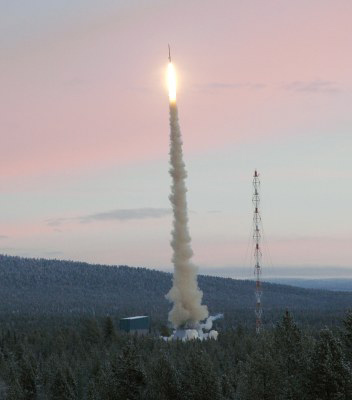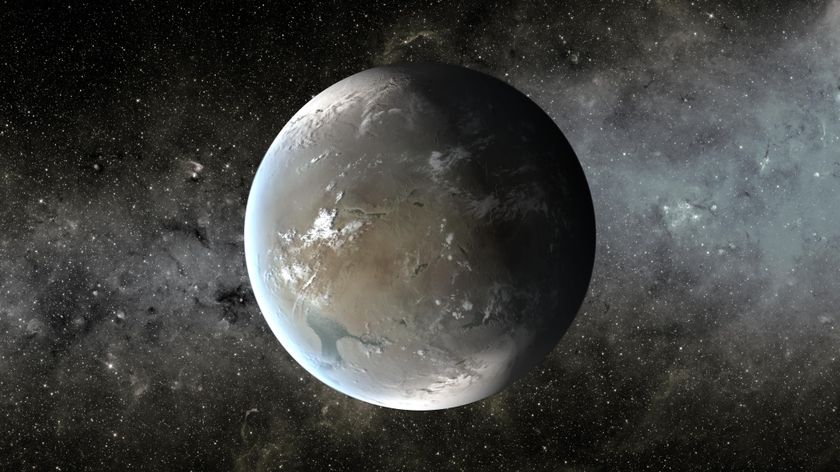Brazilian Rocket Launches Microgravity Experiment

A Braziliansuborbital rocket successfully launched a European microgravity experimentThursday in a debut flight staged from northern Sweden.
A Texus-EMLsounding rocket equipped with Brazil's VSB-30 engine launched from Sweden'sEsrange facility near Kiruna at 4:06 a.m. EST (0906 GMT) on a mission toprovide a few minutes of microgravity for a joint experiment developed by theEuropean and German space agencies, European Space Agency (ESA) officials said.
The spaceshot gave scientists about six minutes and 37 seconds of weightlessness to testthe properties of molten metals for the ESA's IMPRESS science program.
"Thislaunch is a major step forward in zero-g experimentation for the IMPRESSproject," said ESA project manager David Jarvis in a statement.
Thefindings will help the development of new metals for gas turbines, hydrogenfuel cells and jet engines for aircraft, researchers added. IMPRESS is shortfor Intermetallic Materials Processing in Relation to Earth and SpaceSolidification.
The launchalso marked step forward for the Brazilian Space Agency (Agencia EspacialBrasileiria), which hopes to launch its first astronaut - MarcosPontes - to the International Space Station (ISS) in March 2006 aboard aRussian-built Soyuz spacecraft.
During thebrief flight, the two-stage Texus rocket carried a new ElectromagneticLevitator (EML) facility to an altitude of more than 161 miles (260 kilometers), then returned it to Earth via parachute.
Get the Space.com Newsletter
Breaking space news, the latest updates on rocket launches, skywatching events and more!
Esrangeofficials said the rocket performed flawlessly, but flew higher and landedfurther west than normal - about 6.2 miles (10 kilometers) inside Norway in anuninhabited mountain region. One possible cause of the flight deviation may have been the needto aim the rocket more westward to avoid reindeer herders in the easternsection of the nominal landing zone, they added.
Join our Space Forums to keep talking space on the latest missions, night sky and more! And if you have a news tip, correction or comment, let us know at: community@space.com.

Tariq is the Editor-in-Chief of Space.com and joined the team in 2001, first as an intern and staff writer, and later as an editor. He covers human spaceflight, exploration and space science, as well as skywatching and entertainment. He became Space.com's Managing Editor in 2009 and Editor-in-Chief in 2019. Before joining Space.com, Tariq was a staff reporter for The Los Angeles Times covering education and city beats in La Habra, Fullerton and Huntington Beach. In October 2022, Tariq received the Harry Kolcum Award for excellence in space reporting from the National Space Club Florida Committee. He is also an Eagle Scout (yes, he has the Space Exploration merit badge) and went to Space Camp four times as a kid and a fifth time as an adult. He has journalism degrees from the University of Southern California and New York University. You can find Tariq at Space.com and as the co-host to the This Week In Space podcast with space historian Rod Pyle on the TWiT network. To see his latest project, you can follow Tariq on Twitter @tariqjmalik.









